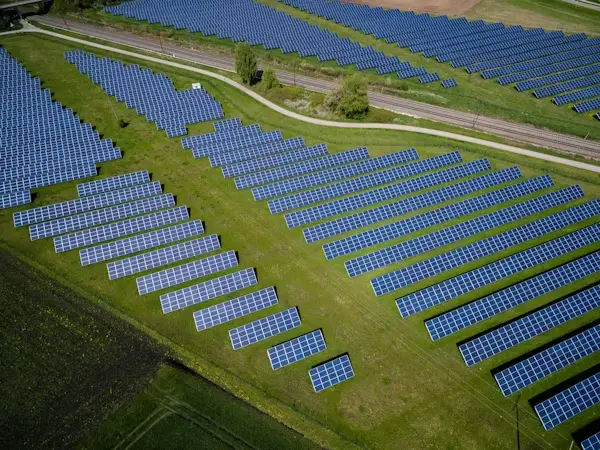Introduction to Solar Panels
Updated: 26 Nov 2024
90
Solar panels, often referred to as photovoltaic (PV) panels, are devices designed to convert sunlight into electricity. They are at the forefront of the renewable energy revolution, offering a sustainable way to meet energy demands while reducing our carbon footprint. Solar panels are composed of numerous solar cells made primarily from silicon, a material known for its ability to conduct electricity under sunlight. These panels are installed on rooftops, fields, or even floating platforms to harness sunlight and produce clean energy.
“Every 24 hours, enough sunlight touches the Earth to provide energy for the entire planet for 24 years”Martha Maeda
With global energy consumption rising, solar panels represent a critical solution for combating climate change. They are versatile, cost-effective over time, and can be integrated into homes, businesses, and even large-scale power plants.
The History of Solar Panels
The journey of solar energy from concept to a mainstream power source is fascinating, blending scientific discovery, engineering ingenuity, and environmental awareness.
Early Discoveries: 19th Century Origins
The roots of solar technology can be traced back to 1839, when French physicist Edmond Becquerel discovered the photovoltaic effect. While experimenting with an electrolytic cell, he observed that certain materials could produce an electric current when exposed to light. This phenomenon laid the foundation for solar technology, although practical applications were still far away.

In 1873, British scientist Willoughby Smith identified the photoconductivity of selenium. A few years later, in 1883, Charles Fritts created the first true solar cell using selenium coated with a thin layer of gold. However, these early cells were inefficient, converting less than 1% of sunlight into electricity, and were primarily used in scientific instruments.
Progress in the 20th Century: From Innovation to Implementation
The development of solar panels accelerated in the 20th century, thanks to advancements in materials science and an increasing demand for alternative energy sources.
- 1954: The Silicon Revolution
A major breakthrough came when researchers at Bell Labs (Calvin Fuller, Daryl Chapin, and Gerald Pearson) developed the first silicon-based solar cell. This innovation increased efficiency significantly, allowing solar cells to convert about 6% of sunlight into electricity. These cells were robust, paving the way for practical applications. - 1960s: Space Exploration and Solar Energy
During the space race, solar panels gained prominence as a reliable energy source for satellites. NASA used photovoltaic cells to power spacecraft like Vanguard 1, which remains the oldest artificial satellite still in orbit. The success of solar in space highlighted its potential for Earth-based applications.
Widespread Adoption: Late 20th and Early 21st Century
The 1970s energy crisis pushed governments and researchers to explore renewable energy options, including solar power. This era saw a focus on improving efficiency and reducing costs:
- Government Support and Policy: Countries like the United States and Germany initiated programs to fund solar research and subsidize installations.
- Mass Production: By the 1990s, advances in manufacturing made solar panels more affordable, and the industry began scaling up to meet global demand.
In the 21st century, technological advancements, environmental awareness, and falling prices have made solar energy accessible to millions. Efficiency rates have soared past 20% in commercial panels, and innovations like thin-film solar cells and bifacial panels promise even greater performance.
Modern-Day Solar Panels: A Game Changer
Today, solar panels are at the heart of the green energy movement. They power homes, businesses, and even entire communities, offering a clean, renewable energy source that helps combat climate change. The International Renewable Energy Agency (IRENA) estimates that solar power capacity globally has reached over 1,000 gigawatts as of 2023, and it continues to grow rapidly.
Modern panels are used not only in traditional setups but also in innovative applications such as:
- Solar farms that feed electricity directly into national grids.
- Floating solar installations on reservoirs and lakes.
- Building-integrated photovoltaics (BIPV), where panels are embedded in windows and facades.
Conclusion
The history of solar panels illustrates the power of human ingenuity in addressing global challenges. From Becquerel’s discovery in the 19th century to the sprawling solar farms of today, solar technology has evolved into a vital part of our energy landscape. As costs continue to fall and efficiency improves, the future of solar energy looks brighter than ever, promising a sustainable way to power our world.
Would you like suggestions for additional sections or blog post titles?
Please Write Your Comments